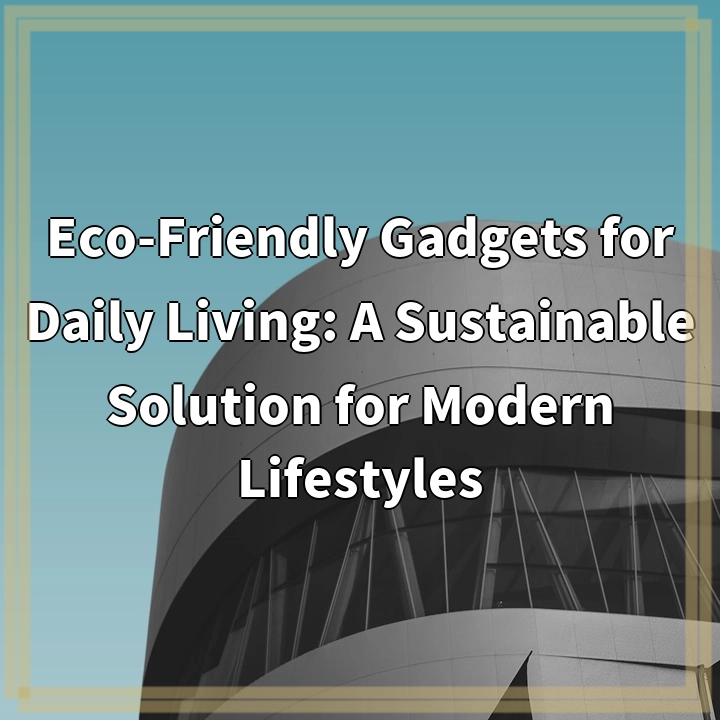Physical Address
304 North Cardinal St.
Dorchester Center, MA 02124
Physical Address
304 North Cardinal St.
Dorchester Center, MA 02124

Eco-friendly gadgets for daily living are innovative and sustainable products designed to minimize the negative environmental impact of our daily activities. These gadgets are intended to improve energy efficiency, reduce waste, and promote a more sustainable lifestyle.
Eco-friendly gadgets offer numerous benefits, but they also come with their own set of challenges and limitations. It’s important to be aware of these issues to make informed choices and maximize their positive impact:
One of the main barriers to adopting eco-friendly gadgets is the higher upfront cost compared to traditional alternatives. This can deter some people from investing in sustainable options, even though they may save money in the long run through reduced energy consumption or lower maintenance costs. Finding ways to make eco-friendly gadgets more affordable and accessible is crucial for wider adoption.
Some eco-friendly gadgets may not perform as well as their conventional counterparts or have limited functionality. For example, energy-efficient appliances may require longer cooking or drying times. It is essential to strike a balance between sustainability and practicality to ensure that eco-friendly gadgets can compete with traditional options without compromising user experience.
While eco-friendly gadgets aim to reduce waste, they may still contribute to the growing problem of electronic waste (e-waste). Some devices contain non-recyclable or hard-to-dispose-of components, which can be harmful to the environment if not properly managed. Manufacturers and consumers need to prioritize product design and encourage recycling initiatives to minimize the environmental impact of discarded gadgets.
Many people are unaware of the availability and benefits of eco-friendly gadgets. Lack of information and education can prevent individuals from making sustainable choices. Increasing awareness through education campaigns, consumer guides, and product labeling can empower individuals to make informed decisions and drive demand for eco-friendly options.
Greenwashing, the deceptive practice of promoting a product as environmentally friendly when it is not, is a significant challenge in the eco-friendly gadget market. Consumers may encounter misleading or exaggerated claims, making it difficult to differentiate between genuinely sustainable options and those that are simply marketing ploys. Manufacturers should prioritize transparency and third-party certifications to build trust and credibility for their eco-friendly gadgets.
Eco-friendly gadgets have the potential to play a significant role in creating a more sustainable future. By understanding the real-world problems associated with these gadgets, we can work towards solutions that address these challenges and promote the widespread adoption of eco-friendly technologies.
To address the challenges associated with eco-friendly gadgets, several solutions can help pave the way for a more sustainable future:
Governments can provide incentives such as tax credits or subsidies to encourage the purchase of eco-friendly gadgets, making them more affordable for consumers.
Continued investment in research and development can lead to advancements in eco-friendly technology, improving performance and functionality, thereby narrowing the gap with traditional options.
Implementing EPR programs that hold manufacturers accountable for the end-of-life disposal and recycling of their products can ensure proper management of eco-friendly gadgets and reduce e-waste.
Promoting education and awareness campaigns about the benefits of eco-friendly gadgets can increase consumer knowledge and empower them to make sustainable choices.
Manufacturers can seek third-party certifications to validate the sustainability claims of their products, providing transparency and building trust with consumers.
By implementing these solutions, we can overcome the challenges associated with eco-friendly gadgets and create a more sustainable future for all.
If you’re wondering where the article came from!
#